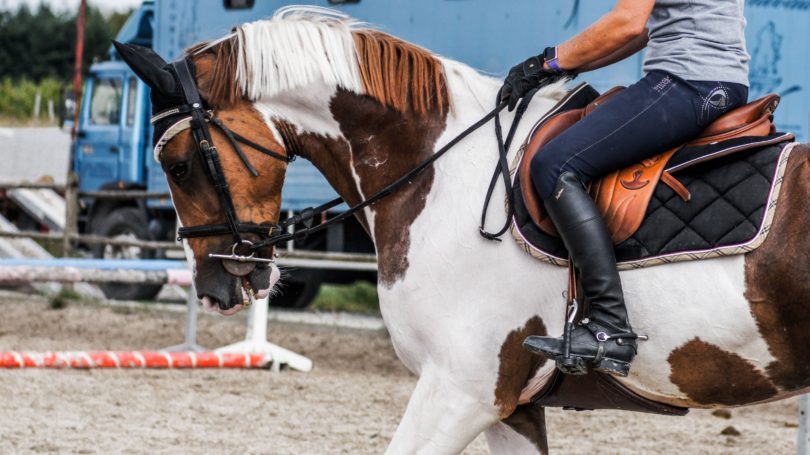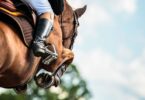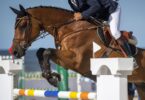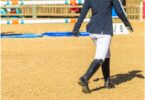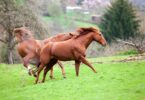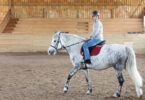There are many opinions among equestrians about when you should start jumping a horse. Most of these discussions focus on when a horse is primarily physically, but also mentally, ready for a higher-impact activity, such as work over fences.
In general, a horse should have a solid foundation on the flat, over ground poles, cavelletti, and small crossrails before moving on to bigger fences. Most riders begin jumping before a horse is fully grown (5-7 years). With proper judgement, fitness, and horsemanship, schooling younger horses over starter fences is acceptable.
New to the sport? Check out our 26-Page Horse Rookie’s Guide to Jumping.
Equine growth and development
Horses mature at approximately the same rate, regardless of breed or type, and aren’t fully grown until five to seven years old. Growth plates, which begin as cartilage become bone over time, typically convert from the feet upwards.
Many riders wait until a horse’s knees close to begin heavy work, as it is easier to damage cartilage than bone.
Knees, however, are not the only growth plates in the horse’s body—the knee end of the horse’s radius is simply the last area of the leg to close. It’s also typically the area where a vet will x-ray to check growth plate progress.
The last structure to mature in a horse is the spine.
Similar to human anatomy, horses have cranial, thoracic, and lumbar vertebrae, and they mature from front to back.
Cranial vertebrae close by three years of age, thoracic and lumbar vertebrae by five to seven.1
As horses grow, they tend to develop in uneven spurts. They may grow taller in the hip, then the withers, then the hip again, before (hopefully) evening out at maturity.
This means their balance is constantly shifting.
A young horse may become capable of maintaining a balanced canter, then go through a growth spurt and begin to struggle once again with that same gait.
It is important to take these stages of growth into account when developing a training strategy for a growing horse.2
Most trainers and riders don’t wait until a horse is fully-grown at five to seven years old to start riding, let alone jumping. A big part of this is economics; many people can’t afford for horses to sit around until fully developed before starting their jobs.
Check out our 10 Best Stirrups for Jumping Clear (and Staying Safe).
So what’s the “right” answer?
There is a happy medium, and like most things, it depends on the individual rider and horse.
After a solid foundation on the flat is developed, working over ground poles, cavelletti, and small crossrails is the natural progression. If you’re interested in jumping, these exercises are also a great way to keep your horse interested and engaged.
In a Practical Horseman article, Wilhelm Genn, a Grand-prix rider, says that incorporating jumping into a carefully planned training program can be perfectly safe at any age as long as good horsemanship and judgement are used.2
He emphasizes the importance of fitness and slowly building up a young horse’s strength and endurance. After a horse has a solid foundation of flatwork, jumping under saddle can begin.
That’s why it’s best to start small and slowly, with cavalletti and crossrails, and gradually work up.
He suggests it’s best to jump fewer fences multiple times a week than cramming in lots of jumps less frequently. As soon as a horse shows signs of tiring, it’s time to stop jumping.
FAQ time: You may have wondered, can all horses jump?
Advice in action
The horse below is balanced and is moving nicely on the flat. Professionals agree it is best to wait to begin jumping until your horse has a solid foundation on the flat.

Photo by Laila Klinsmann from Pexels
In contrast, the horse below is a Grand Prix jumper. You can see the strain on the its joints from a combination of fence height and a tight turn.
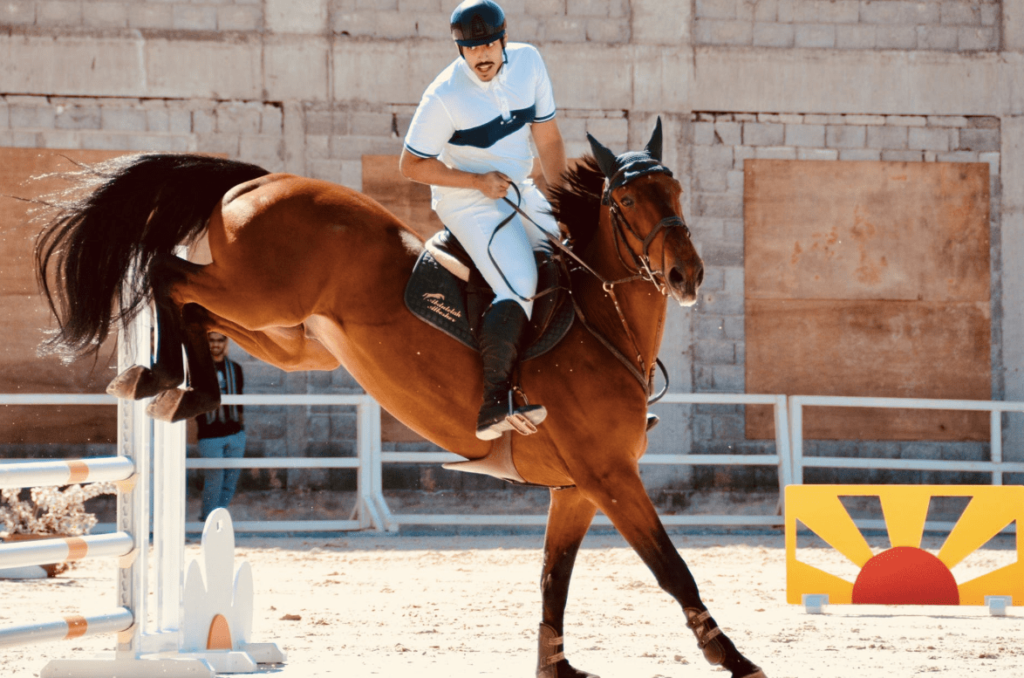
Photos from Pexels
This level of jumping is something to be worked up to gradually, after the horse is fully grown and experienced in lower levels.
New to the sport? Check out our 26-Page Horse Rookie’s Guide to Jumping.
When in doubt, take your time
There are many resources available on this topic. Some are rooted in fact, others in opinion or tradition.
An experienced trainer, in consultation with your veterinarian, can help you decide when your horse is ready to start jumping.
If you’re still not sure whether your horse is ready, patience is always a safe option. Take things slowly, and build up your horse’s fitness step by step.
P.S. Enjoy this article? Trot on over to:
- 12 Pointers for Jumping Crossrails with Confidence
- 10 Best Stirrups for Jumping Clear (And Staying Safe)
- What is the correct jumping position for horse riders?
- Compositi Stirrups Review: I’ve Never Jumped Better
- 100+ Things to Pack for a Jumping Horse Show (Checklist)
- 4-Star Favorites: The 4 Best Cross Country Stirrups
- Horse Riding for Older Adults: Why It’s Never Too Late
- How Often to Replace Horseback Riding Helmets
- How exactly do you “fold” when jumping a horse?
References:
- https://equinewellnessmagazine.com/horses-mature/
- https://practicalhorsemanmag.com/training/start-young-horse-fences-23682

